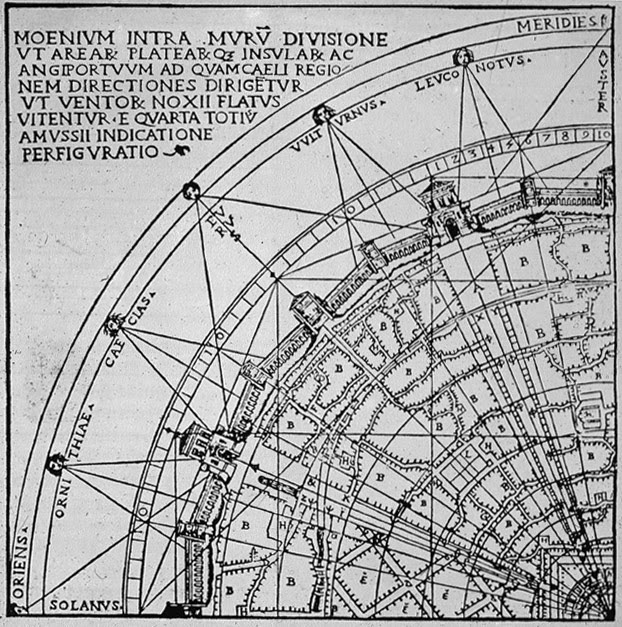 |
| Landscape with Hagar and the Angel, John Constable |
There's an anecdote about Constable that shows, apocryphally or not, how revolutionary he was for his time regarding the use of color: "The story goes that [Constable's friend and patron, Sir George Beaumont] remonstrated with him for not giving his foreground the requisite mellow brown of an old violin, and that Constable thereupon took a violin and put it before him on the grass to show the friend the difference between the fresh green as we see it and the warm tones demanded by convention." [Incidentally, Landscape with Hagar and the Angel (above) was Beaumont's favorite painting].
 |
| The Embarkation of the Queen of Sheba, Claude Lorrain |
Of course, Constable wasn't the first to notice that grass is green and violins brown. Both of them knew that such matching was against the strict requirements of contemporary taste, however, and possibly even aesthetics. The point at issue was a much more subtle one - how to reconcile what we call "local color" with the range of tonal gradations which the landscape painter needs to suggest depth. We find an echo of these discussions in an observation by Benjamin West recorded in The Farington Diary:
"He thinks Claude [Lorrain] began his pictures by laying in simple gradations of flat colours from the Horizon to the top of the sky, and from the Horizon to the foreground, without putting clouds into the sky or specific forms into the landscape till He had fully settled those gradations. When He had satisfied himself in this respect. He painted in his forms, by that means securing a due gradation, from the Horizontal line-to the top of his sky, and from the Horizontal line to the foreground. Smirke remarked how entirely all positive colour was avoided, even to the draperies of the figures. Turner said He was both pleased and unhappy while He viewed it, it seemed to be beyond the power of imitation."
 |
| Flatford Mill, John Constable |
These experiments with gradations from a pale blue to a mellow brown by seventeenth- and eighteenth-century artists taught Sir George Beaumont (an amateur painter himself) how to suggest light and distance in a landscape. The eighteenth century had even invented a mechanical device to aid the painter in this transposition of local color into a narrower range of tones. It consisted of a curved mirror with a toned surface that was appropriately often called the "Claude glass" and was supposed to do what the black-and-white photograph does for us, to reduce the variety of the visual world to tonal gradations. Eighteenth-century masters achieved most pleasing effects with foregrounds of warm brown and fading distances of cool, silvery blues.
 |
| Lady Elizabeth Delme and Her Children, Sir Joshua Reynolds |
Looking at Reynolds' Lady Elizabeth Delme and Her Children in the National Gallery in Washington or, for that matter, at Thomas Gainsborough's Landscape with a Bridge, we realize the value of an even gradation based on the brown of the foreground. Indeed, a glance at Constable's View of Salisbury Cathedral convinces us that he, too, achieved the impression of light and depth by modulating tone.
 |
| View of Salisbury Cathedral, John Constable |
Constable questioned the need to remain within the compass of one scale. He wanted to try out the effect of respecting the local color of grass somewhat more-and, indeed, in his Wivenhoe Park he is seen pushing the range more in the direction of bright greens. Looking at Wivenhoe Park now, it looks so natural and obvious that it's easy to forget its daring originality.
 |
| Wivenhoe Park, John Constable |
Once we realize this basic fact, the master's contention that all paintings should be viewed as experiments in natural science loses much of its puzzling character. He is trying to produce what he called the "evanescent effects of nature's chiaroscuro" on canvas, within a medium which excludes matching. Indeed his experiments resulted in discoveries. For instance, there was resistance at first against so much green, which was thought to upset the needed tonal gradation.
There is a story about Constable's sitting on the jury of the Royal Academy, of which he was a member, when by mistake one of his own paintings was put on the eascl for judgment, and one of his colleagues said rashly, "Take that nasty green thing away."
 |
| Landscape with a Bridge, Thomas Gainsborough |
A quick walk walk through any major gallery shows that in the end Constable's method found wide acceptance. We know that when his Hay Wain was shown in Paris, French artists were stimulated to repeat his experiments and lightened their palettes. We can now read much brighter pictures, such as the landscapes by Corot and, what is more, enjoy the suggestion of light without missing the tonal contrasts which were thought indispensable. We have learned a new notation and expanded the range of our awareness.
 |
| Ville d'Avray, Corot |
[The previous passage was excerpted from Ernst Gombrich's Art and Illusion]






_-_Google_Art_Project.jpg)








































